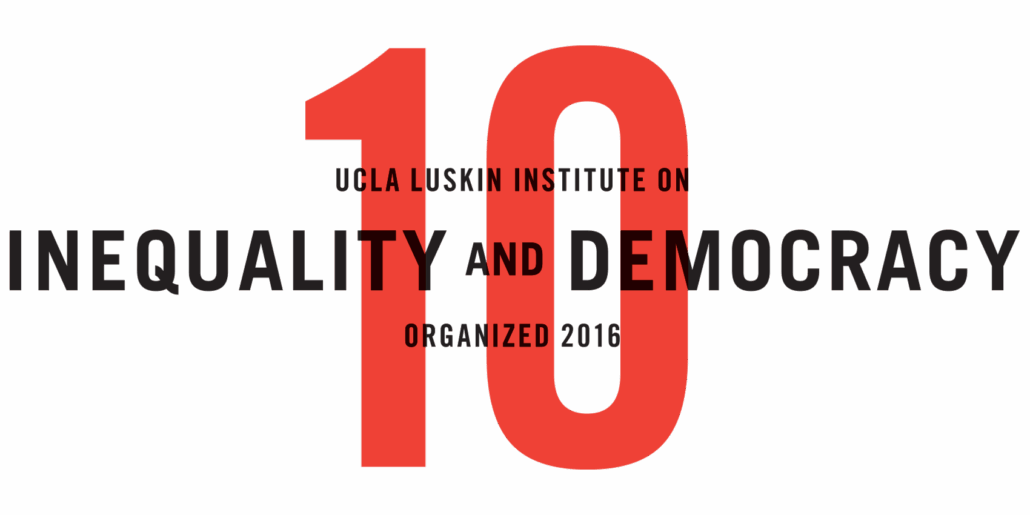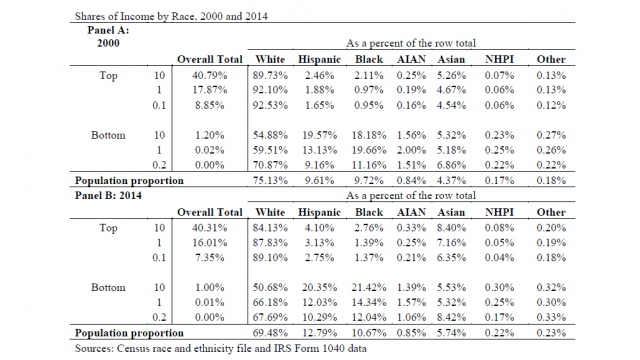Sources compiled from the U.S. Census race and ethnicity file and IRS Form 1040 data to show the shares of income by race. Image credit: Randall Akee, Maggie R. Jones and Sonya R. Porter
Income Inequality and Income Mobility for American Indians, Alaska Natives, Native Hawaiians and Pacific Islanders
Randall Akee, Public Policy, UCLA
This project investigates the well-known phenomenon of increasing income inequality and reduced economic mobility in the U.S. in recent years. The analysis is novel in that we are able to separate out differences across the major race and ethnic groups in the U.S.
Our analysis* is novel in that we are able to separate out differences across the major race and ethnic groups in the U.S. Previous researchers have been unable to conduct this type of analysis given the relatively small sample sizes in survey data for certain race and ethnic groups. The table above shows the discrepancies across the race and ethnic groups in terms of the top and bottom shares of income distribution in the United States for the years 2000 and 2014.
The share of income accruing to the top 10 percent of the population of all tax filers was about 41 percent in 2000 and 40 percent in 2014. Looking across the columns for 2000, about 90 percent of the income that accrued to the top 10 percent of tax filers went to Whites, while about 2.5 percent went to Hispanics, 2.1 percent to Blacks, 0.25 percent to American Indians, and 5.3 percent to Asians. At the bottom of the panel, we report the proportion of the population of each of these groups for our restricted sample of tax filers ages 25–65. Comparing the share of the population to the share of income accruing to each group provides an additional measure of inequality. Whites received a strongly disproportionate share of top income, while Asians received slightly more than their proportionate share. Meanwhile Hispanics, Blacks, American Indians, Pacific Islanders, and Others accrued less than their proportionate share of total income in the top 10 percent. Looking at Panel B (2014), there are noticeable changes over time: The share accruing to Whites decreased to about 84 percent and the share for Hispanics increased to 4 percent. However, the proportion of Whites in the population decreased to about 70 percent, while Hispanics increased to about 13 percent. Asians realized an increase to an 8 percent share while Blacks, American Indians, and Pacific Islanders did not realize any noticeable changes at the top 10 percent over this time period.
This analysis is repeated for the Top 1%, Top 0.1% and the Bottom 1% in the income distribution.
Read >> Race Matters: Income Shares, Income Inequality, and Income Mobility for All U.S. Races (Published June 2019)
Read >> Adding Insult to Injury: Racial Disparity in an Era of Increasing Income Inequality (Published January 3, 2017)
*Randall Akee, University of California, Los Angeles; Maggie R. Jones, U.S. Census Bureau; Sonya R. Porter, U.S. Census Bureau. This draft is released to inform interested parties of research and to encourage discussion. The views expressed are those of the authors and not necessarily those of the U.S. Census Bureau.




